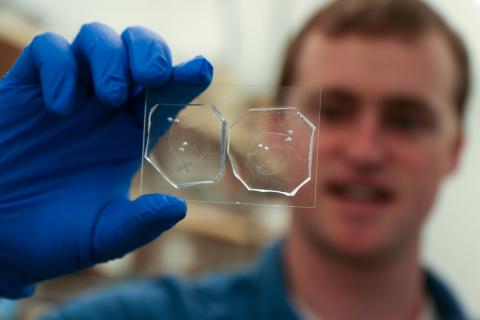Each year, millions of couples in the United States and around the world struggle with infertility. For these couples, assisted reproductive technologies (ART) including in-vitro fertilization (IVF) and intrauterine insemination (IUI) play a critical role in helping them to initiate pregnancy. According to the CDC, 1.6% of children born in the US this year, will have been conceived using ART. At the beginning of every cycle of ART is a semen preparation step in which sperm cells are activated and contaminants are cleaned from the sample.
Although this preparation step is ubiquitous to ART procedures, the methodology has been largely unchanged in the last 20 years. Recently, researchers at the University of Utah, including 2015 ARCS scholar Alex Jafek, have found that it may be possible to significantly improve the sample preparation step by employing microfluidic techniques. Preliminary data acquired by the group suggest that microfluidic techniques could significantly speed up the process, improve the patient experience in the clinic, and could potentially increase the likelihood of pregnancy from a given sample by retaining a higher quantity of motile sperm cells from the original sample.
In speaking about the project, Alex commented that “It is a real privilege as an engineer to work on projects that will have an impact on people and their families.” Based on data acquired by Alex and other members of the Dr. Bruce Gale lab, the National Institute of Health (NIH) recently awarded a $1M grant to continue to develop the microfluidic technology and move it towards market.
This work is done in collaboration with the University of Utah Andrology clinic and the Salt Lake City-based startup Nanonc.

